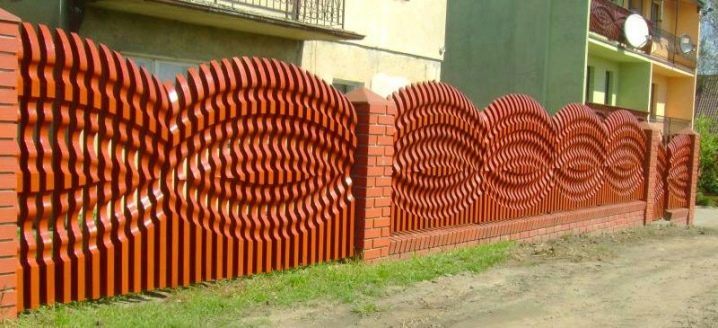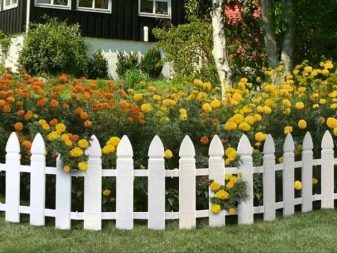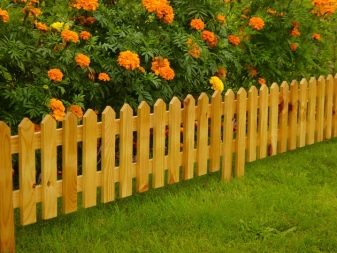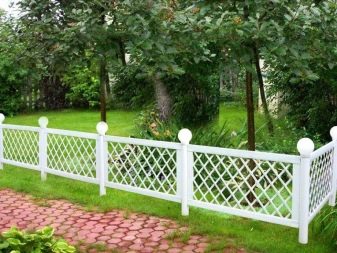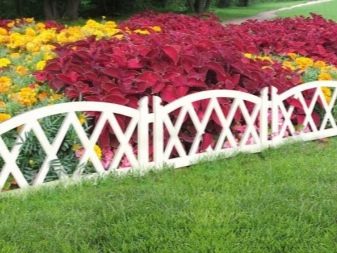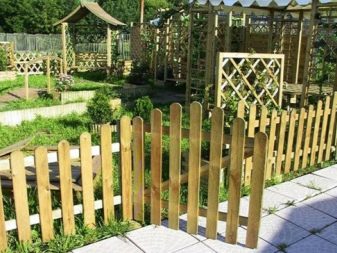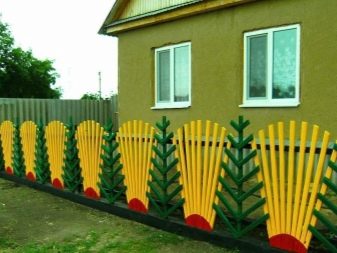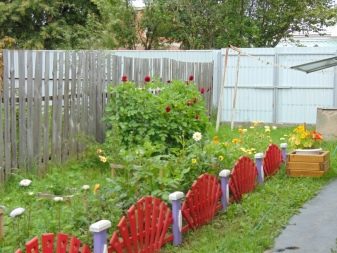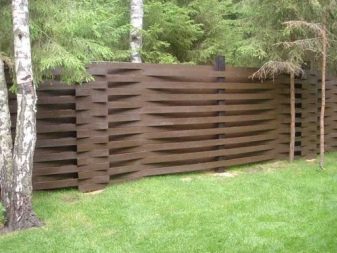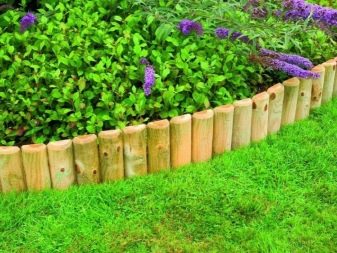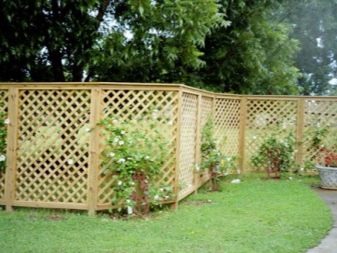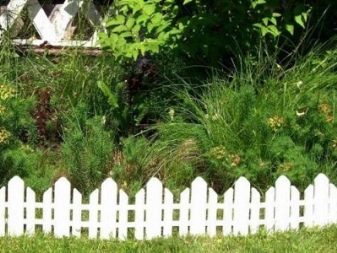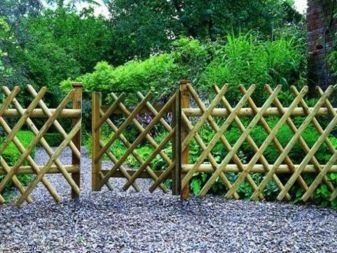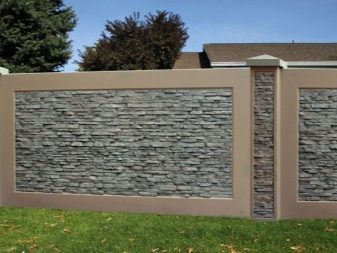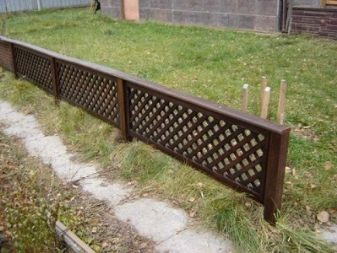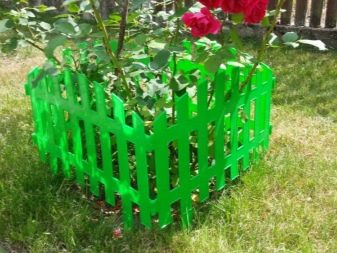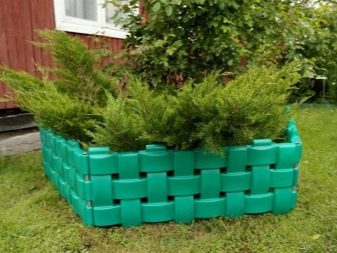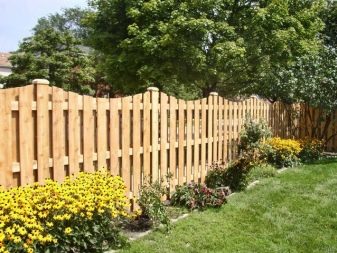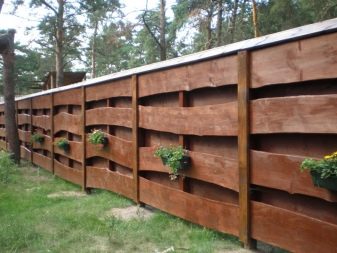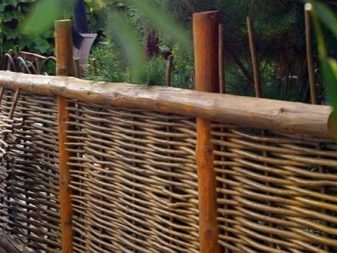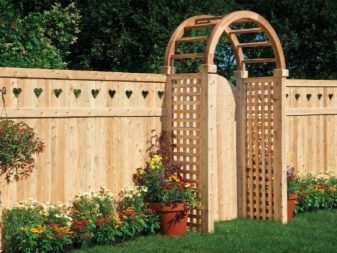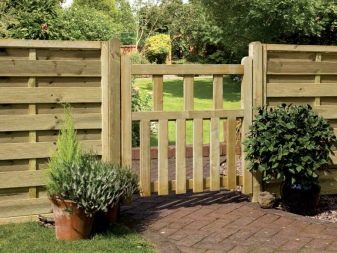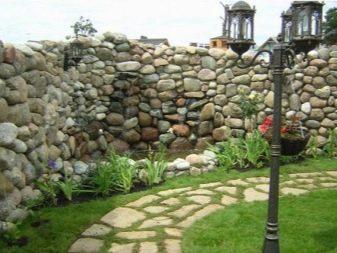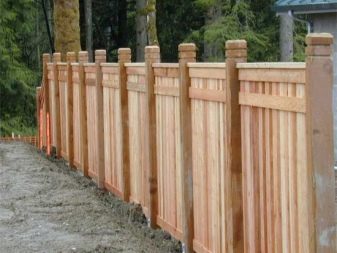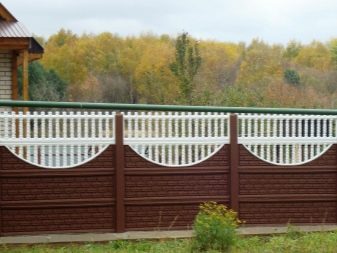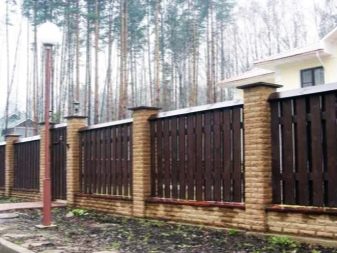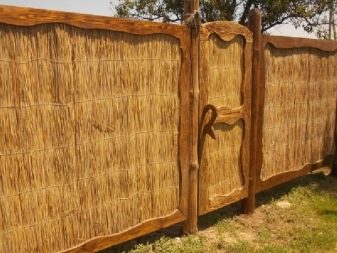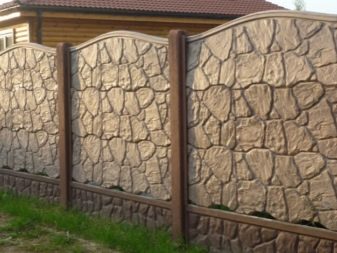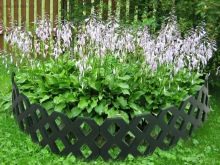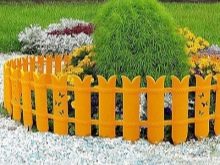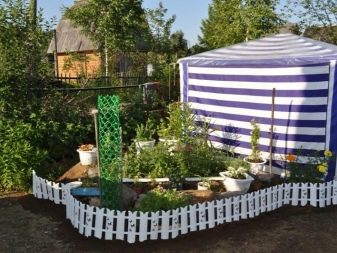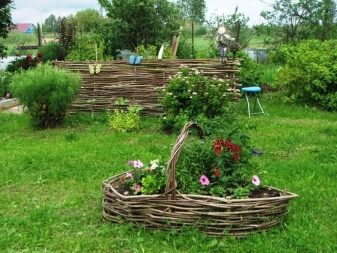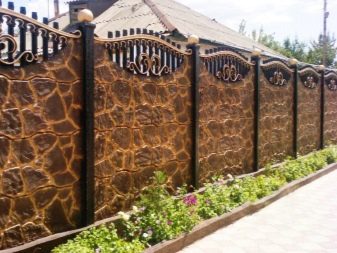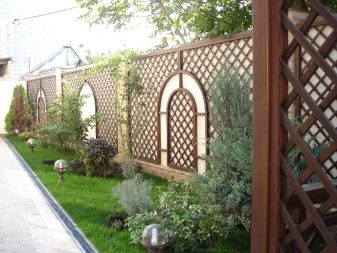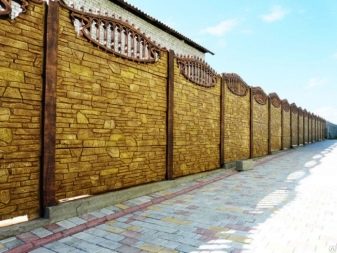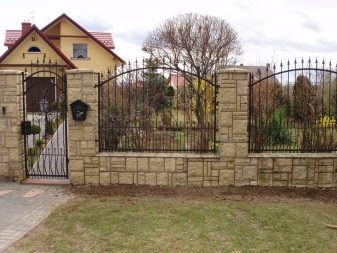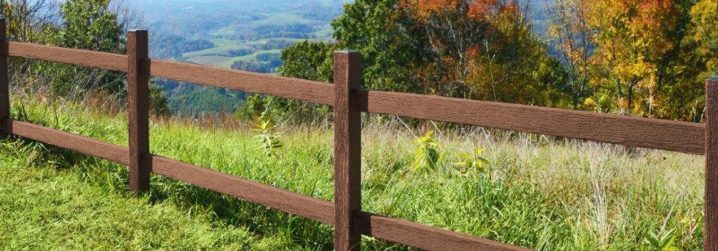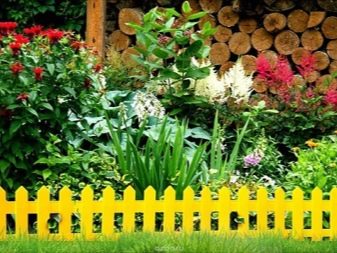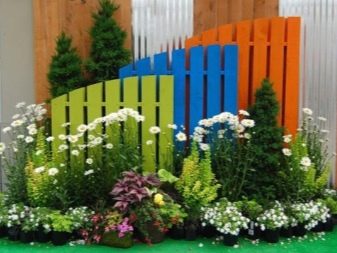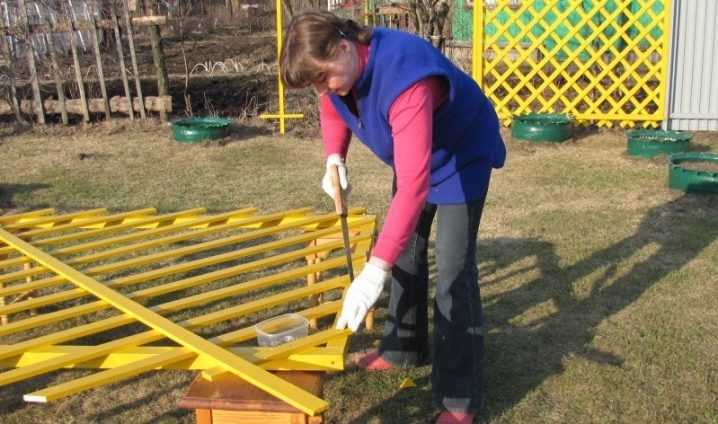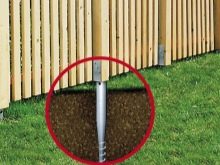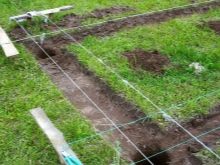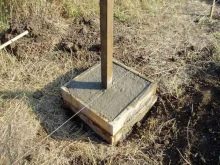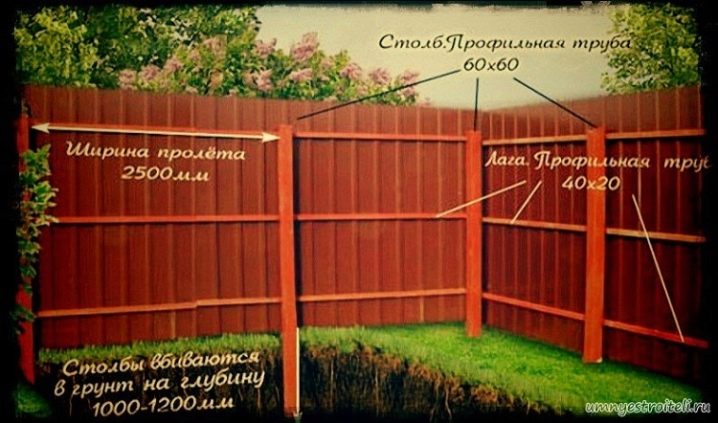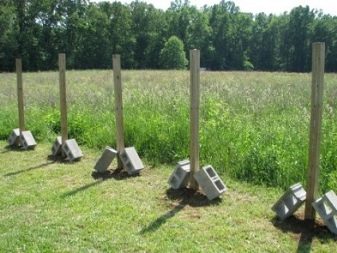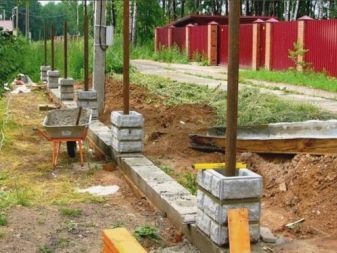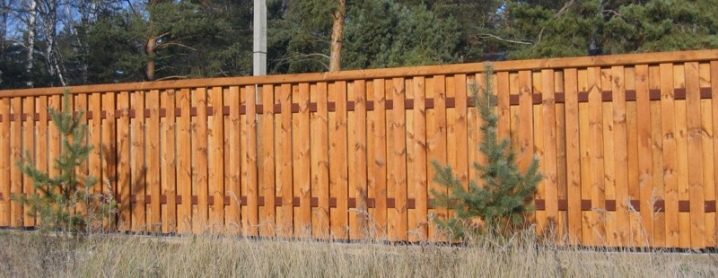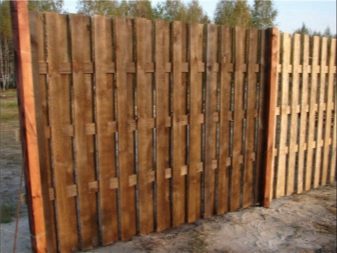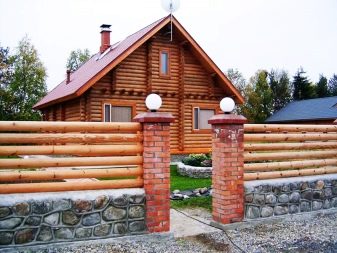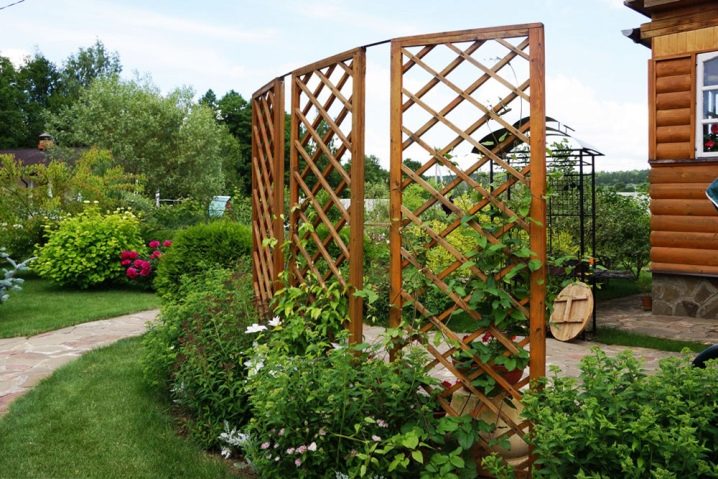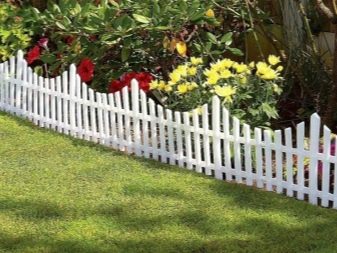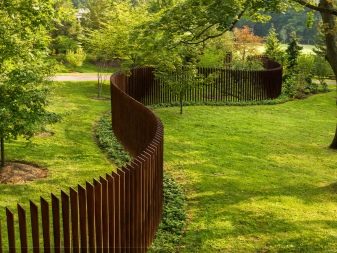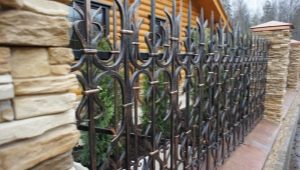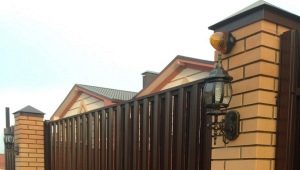Decorative fence: types of materials and step-by-step assembly of a design
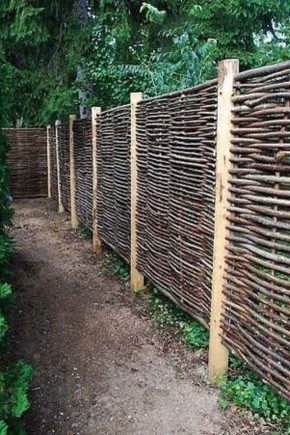
Any fence should be beautiful and elegant, well fit into the situation on the site and in the adjacent territory. Even by itself, the protective function may be absent, but the requirements for external elegance can not be canceled. The highest design characteristics have the so-called decorative fences, and it is very important to find out what they are, exactly how they are created.
Special features
With the help of a decorative fence, it is easy to arrange both summer and private plots. You can both focus on the design possibilities of the barrier, and give it additional protective properties.
A decorative fence can be placed not only on the outer perimeter, but also around flowerbeds, individual paths.
The costs and volume of materials when creating such a barrier can vary within very wide limits depending on which project you choose, and which perimeter you want to cover with a fence. Anyway, Providing the site with a unique and elegant look is easy enough.
Advantages and disadvantages
The main advantage of the decorative fence is its presentable appearance. You can hear that most often this design has insufficient protective characteristics. But this indicator is relative, because sometimes even a serious reinforcement will not become an obstacle to the attackers.
For additional protection, you can install among the decor of the camcorder hedge. So you save money and get almost the same protection as with a capital brick structure.
Decorative fence allows you to effectively distinguish between space, create barriers to the spread of plants. Thus, flowers will grow only where you want. The role of barriers of this kind in the protection of garden and horticultural crops from various animals or accidental trampling.The maintenance of fenced flower beds and beds is greatly simplified.
Kinds
The decorative fence is divided into the following types:
- very low barriers separating the flowers from the lawn;
- decorating designs not exceeding 40 cm, which will help protect the landing from children and most pets;
- buried in the ground (this solution is optimal if there are plants on the site that breed by the root method, or representatives of flora that are very sensitive to weed attacks);
- elevated above the ground (if done correctly, the stability and reliability of the structure will not be affected).
The barrier around the garden can be made of plastic, wood, concrete, gabions and slate. Plastic constructions are universal because they can be used in a wide variety of situations.. The possibilities of decorating such fences are large enough, and with due diligence, you can easily achieve an attractive appearance. You can even change it if the old design has ceased to like or does not fit into the new approach to the design of the site.
However, if there is a desire to make a fence with a sliding gate, you will have to use a stronger material - metal or wood.
Material
Plastic (or rather, the shtaketnik made of it) is most easily mounted.You can take high and low, the most simple and fancifully made products, different colors are possible. You only need to purchase the spans in a completely finished form and install them according to the instructions. The fence is easy to clean, it does not burn out in the sun and does not require complex care. But we must bear in mind that This design is quite fragile and is hardly suitable for serious protection of the site and the house.
Wood (pine, birch) has been used to create fences for many centuries. A number of companies and workshops offer fully finished blocks, the installation of which is relatively simple. There are options both on the basis of logs, and with the use of boards or even relatively thin slats.
You need to choose, focusing on the style and features of the fence. From the tree you can form a fence of different colors.
It should be noted that wattle are also made of wood, that is, rods fences. This approach is not suitable for classical courtyards, solemn and cutting-edge design solutions. Many designers try to use manzel fences (in a special way made by a picket fence),because they look really original. In turn, concrete panels have another advantage - they are very strong and last long enough.
Dimensions
The size of the decorative fence can be very different. Low fencing elements are able to guarantee optimum strength, and at the same time they do not block the spread of air, do not impair the ventilation in the area. It is possible to create such a barrier if the perimeter of the enclosing space is covered with holes (30-50 cm deep) located at a distance of 1-1.5 m from each other. The diameter of the garden drill is 10–15 cm.
If a planed wooden bar is used, its optimal cross section is 40 to 40, and if you need picket rails, their length should be 30 - 60 cm. The quantity should be selected so that the rails stand in 2-4 cm along the entire perimeter.
For stone fences, metal or concrete pillars are used, the cross section of which is 10–15 cm. The supports should rise above the ground surface by 0.3–0.6 m.
Colors
The choice of color is very important in the preparation of decorative fences. With the help of a well-chosen color, even ordinary-looking concrete can be transformed, making it original and attractive.The main rule is strict harmony with the surrounding buildings and landings. In most cases, landscape designers do not invent anything new, but simply repeat the shade of the roof of the house located on the site.
The lower segment can be done either in a single tone with the upper one, or slightly darker, but it is undesirable to lighten it.
Structures that do not have pronounced uneven reliefs can be coated with colorless paints, they will help to preserve the natural look and original beauty of many finishing materials. The matte gloss of the surface masks the deformations on it, and the glossy paints only underline them.
Functions
The key functions of decorative fences are not only fencing (protection), but also:
- delimitation of parts of the space in the garden;
- demonstration of one or another accent in the composition;
- decoration of flower beds and giving them a clear geometric shape.
These tasks can be combined, in the same garden you can focus on a certain part of the territory, separate it from the adjacent fragment from the other side and even protect it from dogs, cats and other animals.Depending on the main goal, the material and the method of its connection are selected, the desired height and other basic parameters are determined.
When your goal is to securely cover the site or its fragment from criminal attempts, you need to mount high hedges of strong materials. If there is a need to simply block the spread of dust and noise, it is required to install structures made of transparent or translucent parts.
Style and design
First you need to decide whether you need a solid or open fence. The high level of protection in the first case is beyond doubt. But open fences have their own advantages - you will be able to demonstrate to all passersby and neighbors your achievements in decorating the garden and garden. The free passage of air facilitates pest control and improves the microclimate in the area. In addition, improved lighting, which is essential for most plants.
Style "ranch" implies two lanes of a squat barrier, stretched along the entire perimeter of the site. Details must be parallel to the surface of the earth, and to each other.But it is important to note that the “ranch” can be different and have a high dense barrier, the foundation for which is the foundation of reinforced concrete. It is advisable to use bright colors to enhance the color, emphasize the presentability of the decorated fence.
Fences in the spirit of "country" They look beautiful and unusual, a very good option is a tree painted in rich colors. To work using a simple shtaketnik, which looks like natural, painted or artificially aged wood.
Not confused traditional russian fence and country style allows the lack of curly fancy elements in the latter. And still the barriers of this kind paint at least three tones, while the “Russians” have only one color - blue or green (sometimes supplemented with a white tint).
How to do it yourself?
Let us analyze the sequence of actions on the example of a wooden fence. First you need to find out if you are suitable for a picket fence, ordinary boards or logs. It is recommended to draw up a project, focusing on the cadastral plan, so as not to violate the rights of other landowners. Try to calculate the area and determine the exact boundary.as carefully as possible.
Next is:
- markings on the ground;
- connecting marking points with a cord;
- establishing the places where the entrance (entrance) gates will be located, and sometimes the gate;
- drawing the data on the plan to correct the project and remove errors from it;
- determination of a suitable material, method of installation, key parameters of the fence and the amount of sheathing;
- elucidation of the method of mounting transverse lags and plating details.
In most cases, the support pillars are made of steel pipe, as high-quality products, established by all the rules, will work for at least three decades. Soils with little movement when the season changes, which are distinguished by a deep distribution of groundwater, allow key pillars to be installed by blocking or incomplete concreting. And when the length of the section is 250 cm, and the height is 180 cm, it is worth taking at least 4x4 cm to create lag beams.
Cedar wood should be used only if there are sufficient funds, but it allows you to make the fence bright, elegant and very resistant to wear.
It should be noted that other varieties of hardwood and coniferous wood can not tolerate moisture, so it is recommended to choose among them pine or spruce. The first contains less knots, but the second is much easier to hacksaw.
It is possible to fasten wooden elements with the use of galvanized nails, but screws and bolts will hold the parts of the fence as a whole more efficiently and reliably. Work on the installation (zabutovke) begin in any of the corners, where the hole is prepared 100 - 120 cm in depth and 0.4 - 0.5 m in width. The base is covered with a pillow of sand, a support is placed, it is fixed with a pillow of sand and gravel, which is rammed in layers, and it is poured with mortar on top.
Then alternately assemble the logs (2 pcs. On 1 support), sheathe the frame, protect the surface and trim it.
Care Tips
A wooden fence even from the best cedar massif still requires care. It is regularly treated with carefully selected antiseptic and always use exactly the portion indicated by the manufacturer. Only well-dried wood should be processed.. First, the ends should be primed, since they are stronger than other parts exposed to dampness.
You can not save on the facade paint, it reliably prevents the action of ultraviolet radiation.
Successful examples and options
The possibilities of using decorative wooden fences for zoning the site are quite large. An excellent option would be the construction of vertically set rectangular sections with diagonally intersecting elements. The lower part of the structure is hidden by low plants, but this does not spoil the appearance and even brings some flavor to the design.
Pure white separation fence can be made more interesting if it consists of sections, the ends of which are higher than the middle. This wave effect looks very attractive and unusual. A chain of unlinked planks, set vertically with a narrow side to the observer, will help to make the situation even more original. Launching it "snake", you will create a truly unusual design.
How to make a decorative fence with your own hands, you can learn from the following video.
